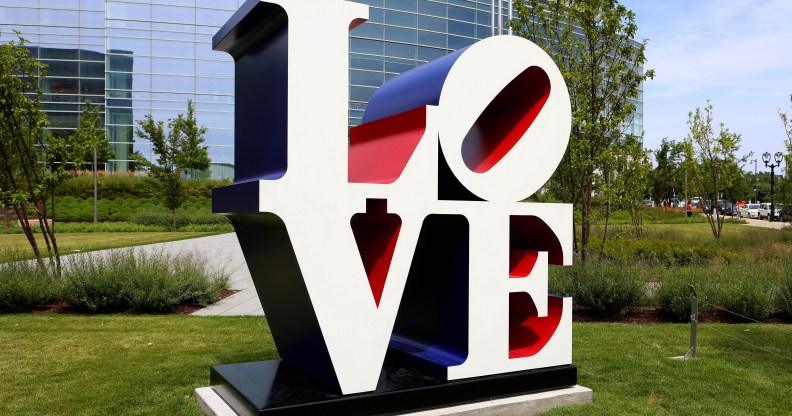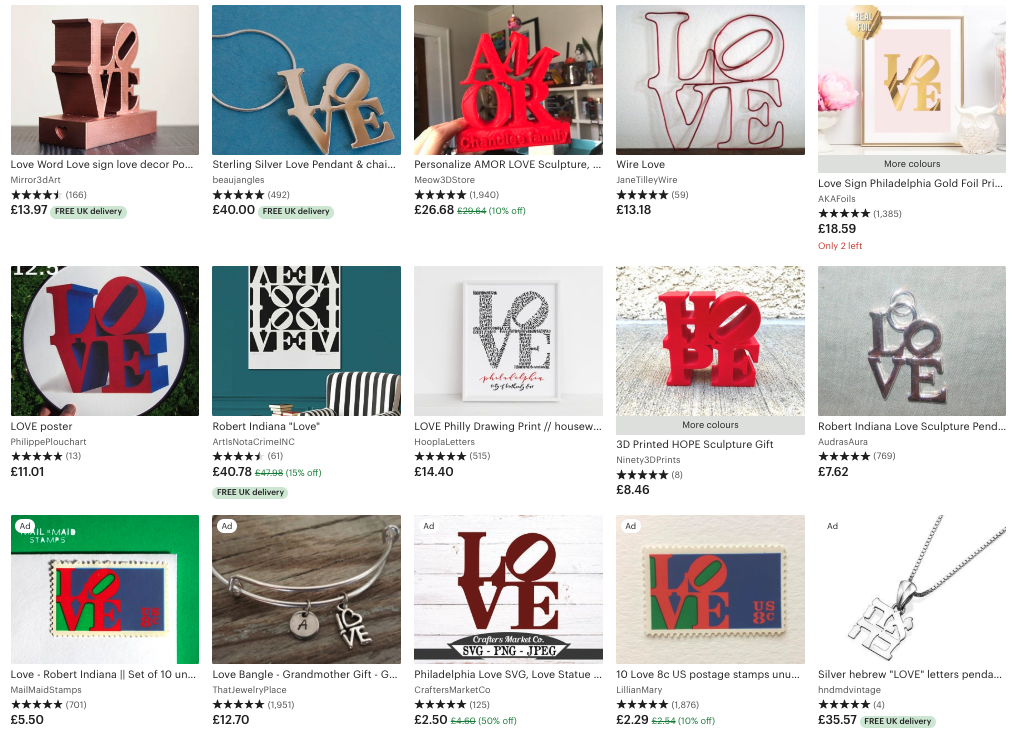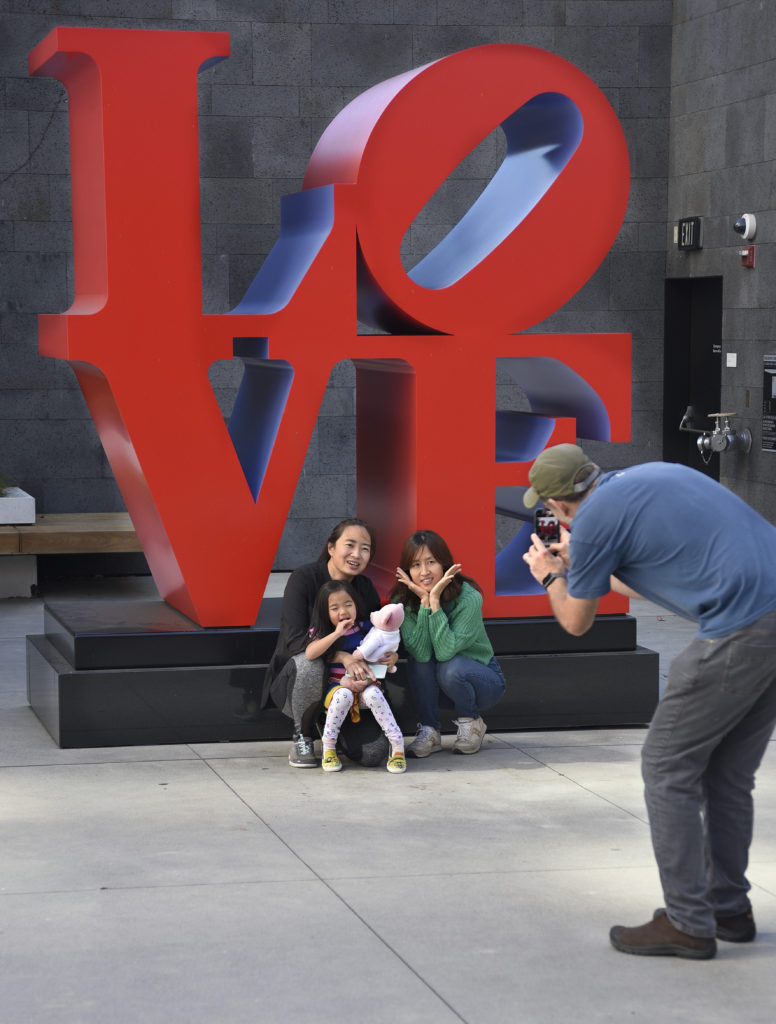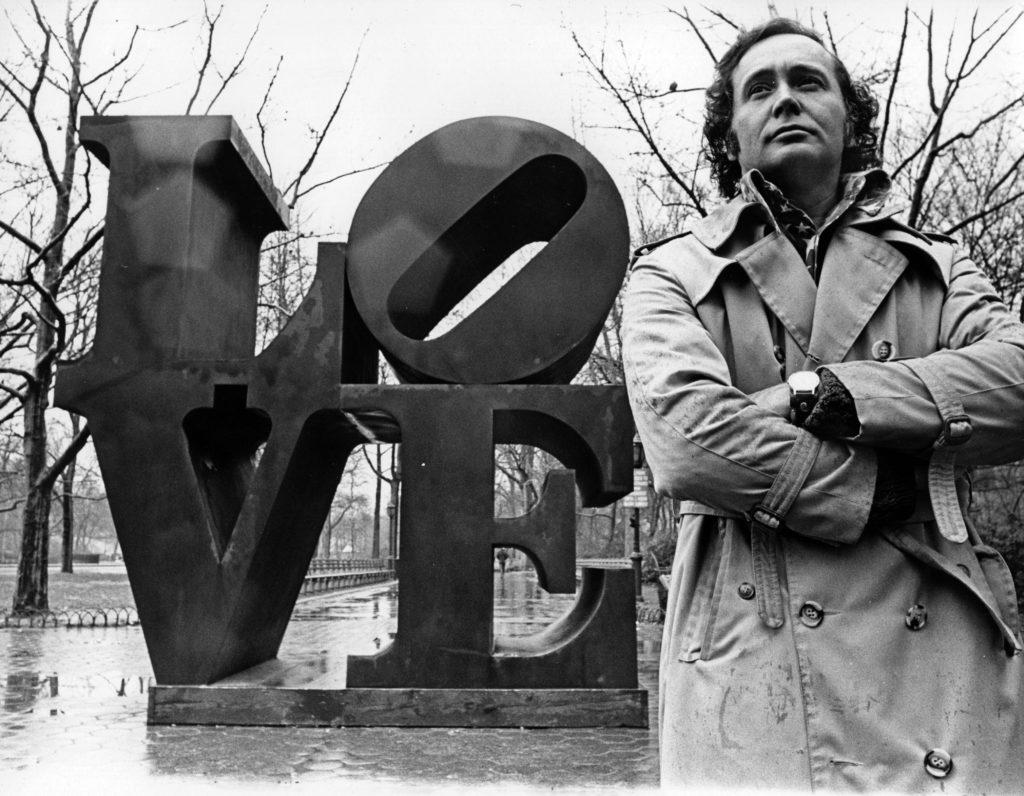One of the world’s most iconic pieces of art was inspired by a gay romance

An installation of Robert Indiana’s “Love” sculpture in Milwaukee, Wisconsin (Raymond Boyd/Getty)
You’ll definitely be familiar with the work of Robert Indiana, even if you don’t recognise his name.
The American artist was central to the pop art movement of the 1960s and is best known for his most famous print, “LOVE”.
Rumoured to have inspired John Lennon to write “All You Need Is Love“, the word has been reprinted on everything from posters, cards and postage stamps to cushions, fridge magnets and doormats – partly because he failed to properly copyright the image.

Indiana’s ubiquitous print has become a millennial home decor staple (Etsy.com)
The iconic four letters can also be seen in sculpture form in cities around the world, including New York, Philadelphia, Singapore and Taipei.
A privately owned sculpture reportedly sold for an eye-watering $4.1 million in 2011, and a special “HOPE” edition of the piece generated over $1 million for the 2008 Obama campaign.
Robert Indiana sadly passed away in May aged 89 and was remembered by the art community in several obituaries. But few acknowledged the fact that the artist’s “LOVE” was actually for men.

A family photographed in front of a “LOVE” sculpture at the San Francisco Museum of Modern Art (Robert Alexander/Getty)
As Bradford R Collins explains in his book Pop Art, Indiana’s “LOVE” was first seen in a series of love poems written to a man in 1956.
“On the purely private plane, works in the series are bittersweet love poems expressing Indiana’s carnal love for Ellsworth Kelly,” Collins explained.
Ellsworth Kelly was a fellow artist who first met Indiana when he walked into the Utrecht Art Supply store in New York where Indiana worked just for $20 a week. He asked for a specific postcard by Matisse, and before long they were in love.
But the pair had a rocky relationship, and Indiana wrote the bittersweet poems with the now-famous “LOVE” letters after their relationship began having problems.

Robert Indiana in 1971 (Jack Mitchell/Getty)
According to Artforum, the four letter word that Indiana originally chose was an angry “FUCK” – perhaps a reflection of his feelings for Kelly at the time.
But the more positive “LOVE” was the version that took off, and as Indiana’s iconic image grew more and more popular he began to resent its fame.
“It was a marvellous idea, but it was also a terrible mistake,” he told NPR in 2014. “It became too popular; it became too popular.”
He was displeased with his work’s legacy and grew reclusive in his final years. But for better or worse, Robert Indiana’s most famous piece still holds an important place in the history of pop art, as well as pop culture.

